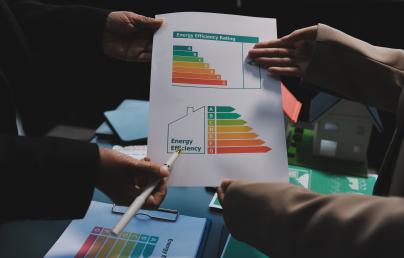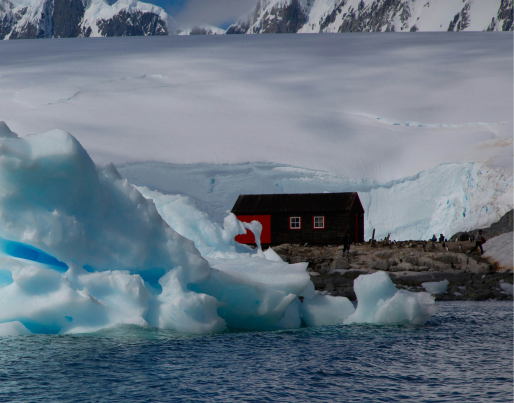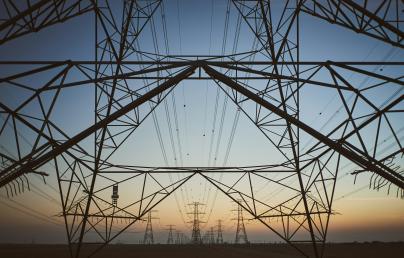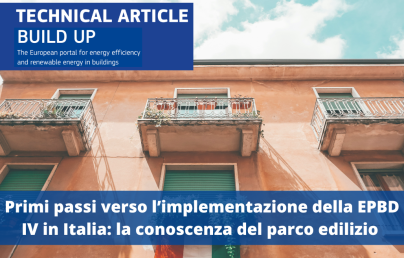
How energy-efficient are buildings in an Antarctic scientific station?

How energy-efficient are buildings in an Antarctic scientific station?
This article demonstrates how the extreme weather conditions affect the buildings' performance of two buildings at the Spanish scientific station 'Gabriel de Castilla' in Antarctica.
Authors
Beatriz Rodríguez-Soria, Orcid profile, Associate Professor at University Defence Center, General Military Academy, Zaragoza, Spain.
Miguel Ángel García-García, Orcid profile, Associate Professor at University Defence Center, General Military Academy, Zaragoza, Spain.
Adeline Rezeau, Orcid profile, LinkedIn profile, Associate Professor at University Defence Center, General Military Academy, Zaragoza, Spain.
(Note: opinions in the present article are of the authors only and do not necessarily reflect the opinion of the EU).
Background
Beatriz Rodríguez Soria conducted an energy characterization of different buildings at the Spanish scientific station 'Gabriel de Castilla', during two months of the austral summer. These tasks presented significant challenges, given the extreme climate conditions, the logistical issues due to the remoteness of the island, and the inherent difficulties associated with collecting data from occupied buildings. The methodological approach involved individualized and non-invasive techniques, and included walls’ transmittance measurement, as well as simultaneous blower door tests with thermography analysis.
The main objective was to retrieve data about the actual energy consumption and the conservation state of the thermal envelope, in order to establish the basis for effectively implementing a renovation strategy of the station. More globally, it also aimed at identifying good construction practices for buildings in extreme climate conditions.
Human activities on the Antarctica continent are, up to now, much less intensive than other countries and continents; notwithstanding, they may have an important impact on the local environment, e.g. permafrost thawing due to building heat release, and on the climate, or transportation of fuel for heating purposes at the station. However, no commitment has been yet agreed to set specific values for greenhouse gas emissions and fossil-based energy consumption at Antarctic bases.
Monitoring methodology
Data was collected by a set of data loggers for indoor air temperature, relative humidity, and CO2 emissions, and by electric network analysers for energy consumption corresponding to heating and hot water purposes. Outdoor weather conditions were monitored by an autonomous meteorological station. Moreover, the conservation status of the buildings was assessed by measuring wall transmittance, surface temperatures and blower door tests, in conjunction with thermography analysis.

Layout of the modules and location of the sensors and energy systems.
Huge energy consumption to maintain an acceptable thermal comfort
The following table provides an overview of the total energy consumption in both the scientific and the principal modules of station during the monitoring period. The table highlights that the total energy consumption for heating purposes is significantly higher compared to domestic hot water purposes. Specifically, the heating of the living wing emerges as the largest energy consumer, consuming a total of 103.5 kWh/m2 over the course of 28 days. This consumption level, observed during one month of monitoring, is nearly on par with the yearly energy consumption for space heating in the European Union [1] and in Canada [2].

Energy consumption for heting and DHW purposes.
A scientific campaign nearly consumes in a month what an EU citizen consumes over a year, for heating purposes.
Such high-energy consumption values are obviously linked to a particularly cold climate (mean external temperature was +1ºC during the monitoring period), but also to the characteristics of the building envelope.
Accordingly, we analyzed the conservation state of the insulation materials and the connections between the different panels. Results are depicted in the next table. As can be seen, all the measured values largely exceed the limits set by technical building codes or energy standards, e.g. [3-4], which indicate a deteriorate state of the modules’ thermal envelope.

Comparison to technical codes and building standards
Several reasons may explain these results. Firstly, the insulation materials present significant degradation, particularly in the lower part (which is buried under snow during winter) and near the joints. This issue is particularly pronounced in the facade facing the bay, which is exposed to strong winds and experiences high temperature gradients between the exterior and the interior. Secondly, the most significant issue in terms of heat loss is attributed to the windows, which have aluminum frames with high transmittance and poor airtightness. Main air infiltrations are observed at the junction between the glass and the window frames, primarily due to the degradation of the spacer sealing.
Conclusions
The research highlights the urgent need for rehabilitation of the buildings to enhance insulation, thermal inertia, and airtightness, alongside implementing effective ventilation strategies. Given the harsh Antarctic climate, characterized by cold air saturated with humidity, strong winds, and salinity, the study emphasizes the importance of using appropriate construction materials and techniques. Recommendations include the use of low-porosity enclosures, high-performance windows with desiccant spacers, anti-corrosion treatments, enthalpy heat recovery systems with mechanical ventilation, and compact aerothermal without external unit. The study also advocates for prioritizing renewable energy sources to improve energy efficiency and reduce the carbon footprint, which is critical for minimising logistical challenges related to fuel supply.
The findings underline that the extreme conditions in Antarctica necessitate specialised construction practices that cannot be extrapolated from other regions, as this would lead to severe building pathologies. The study notes that the energy consumption at the Gabriel de Castilla station is alarmingly high, twelve times greater than the Passivhaus standard. This excessive energy use has severe environmental consequences, including increased greenhouse gas emissions and permafrost thawing. Therefore, the study calls for international regulations to set high standards for building energy efficiency in Antarctica and recommends the creation of guidelines for best construction practices to protect this fragile environment.
Details of the present study may be found at the following link.
References
[1] ODYSSEE-MURE, “European Union - Energy efficiency trends and policies.” p. 10, 2021.
[2] International Energy Agency (IEA), “Heating and Cooling Strategies in the Clean Energy Transition,” Outlooks and lessons from Canada’s provinces and territories. 2019.
[3] Gobierno de España, “Royal Decree 450/2022, of June 14, amending the Technical Building Code, approved by Royal Decree 314/2006, of March 17,” Boletín Oficial del Estado, pp. 61561–61567, 2022.
[4] Passive House Institute, “Criteria for Buildings. Passive House - EnerPHit - PHI Low Energy Building. Versipn 10c,” no. January, p. 131, 2023.

